As the weather starts to cool down and the leaves begin to change, many kayaking enthusiasts find themselves eager to hit the water in their kayaks. However, kayaking in cold weather presents a unique set of challenges, including the risk of hypothermia and discomfort from exposure to the elements.
The low temperatures, icy waters, and unpredictable weather conditions can make this activity challenging and uncomfortable without the proper gear!
Additionally, according to the US Coast Guard’s Boating Safety Statistics 2021, there were 3813 reported accidents involving boating and relaxation, resulting in 353 deaths.
Of these fatalities, 15% were kayaks, and 44% were motorboats. And 122 deaths were caused by drownings, and 7 were due to hypothermia.
Among these 80% of them occurred in water temperatures below 70 degrees Fahrenheit.
This highlights the importance of having the right gear, such as personal flotation devices, signaling devices, and emergency kits, to help prevent accidents and aid in rescue efforts.
The right gear for cold weather can make all the difference between a thrilling and enjoyable kayaking experience and an uncomfortable and potentially dangerous one!
In this guide, we will explore these essentials that can provide warmth, enhance comfort, and ensure safety and emergency preparedness while out on the water. So, read on, and get the most out of your cold weather kayaking adventure.

Jump To A Section
Must-Have Cold Weather Kayaking Gear To Keep You Comfy
Cold weather kayaking requires proper gear to ensure safety, comfort, and enjoyment on the water.
All these cold weather kayaking gear can be broadly categorized into three categories: Warmth-Providing Gear, Comfort-Enhancing Gear, and Safety and Emergency Gear.
Investing in the right gear for cold weather kayaking is crucial to ensure a safe and enjoyable experience on the water.
| Temperature | Risk | Details | Recommendation |
| Below 50°F (10°C) | High | Hypothermia can set in quickly when exposed to cold water. Water-resistant clothing and safety gear is essential. | Avoid kayaking or wear a wetsuit or drysuit with appropriate layering and gear |
| 50°F – 60°F (10°C – 15.5°C) | Moderate | Hypothermia can still occur quickly, so proper gear is still essential. | Wear thermal base layers, fleece or down jacket, neoprene gloves, and waterproof boots or socks. |
| 60°F – 70°F (15.5°C – 21°C) | Low | Hypothermia is less of a concern, but safety gear is still necessary in case of unexpected emergencies. | Wear a wetsuit or drysuit with appropriate layering and gear, and bring emergency supplies |
| Above 70°F (21°C) | Low | Warm weather kayaking conditions, but safety gear is still recommended. | Wear light layers, sunglasses, and sunscreen. |
Here are some of the must-have cold weather kayaking gear you should bring to stay comfy out on the water.
Read on and get ideas to stay comfy out on the water;
Warmth-Providing Gear
The first and most essential kayaking gear to keep you warm is a waterproof and windproof outer layer. This will help keep you dry and warm in the event of rain or wind. There are a variety of different types of waterproof and windproof outer layers available, so you can pick one that best suits your needs.
Depending on the weather, you may opt for a waterproof jacket, raincoat, or even a dry suit. Whichever you choose, make sure it is comfortable and easy to move around in.
Here are all the essential warmth-providing gear for kayaking;
Insulated Wetsuit or Drysuit
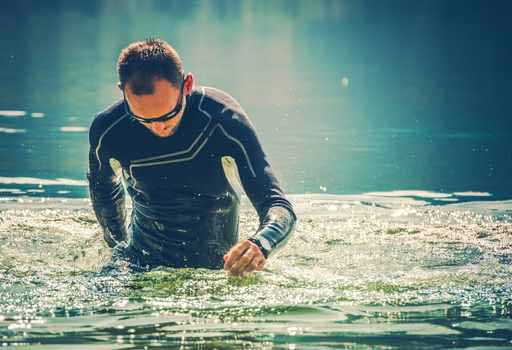
A wetsuit or dry suit is a great way to keep warm in cold water. Wetsuits are designed to keep you warm by trapping a thin layer of water between your skin and the suit to provide insulation.
Drysuits, on the other hand, are designed to keep you completely dry. Both options are suitable for keeping you warm while kayaking in cold weather.
Related Gear
The Kokatat Gore-Tex Front Entry Drysuit is a high-quality, durable, and waterproof drysuit designed for cold weather kayaking. Made with Gore-Tex fabric, this dry suit is breathable and provides excellent protection against wind and water, ensuring kayakers stay warm and dry during their paddling adventure.
Thermal Base Layers
Thermal base layers are another great way to stay warm and comfortable while kayaking in cold weather. These layers are designed to trap heat close to the skin, keeping you warm even in the most frigid conditions. Look for thermal base layers made of breathable, moisture-wicking fabric for the ultimate comfort and warmth.
Related Gear
Patagonia Capilene Air Crew Thermal Top and Bottoms are a great option that is made with merino wool and recycled polyester, providing excellent warmth and breathability.
Neoprene Gloves
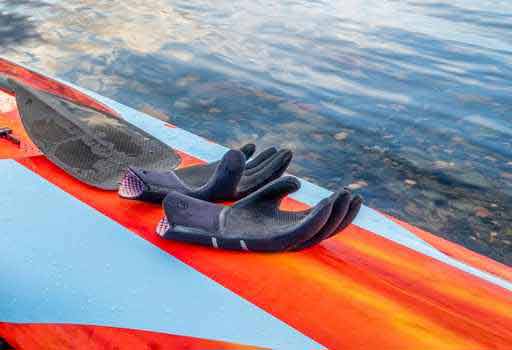
Your hands are one of the first body parts that can get cold while kayaking in cold weather. Neoprene gloves are a great way to keep your hands warm and dry while you paddle. Look for gloves that are waterproof, durable, and have good insulation to keep your hands warm and comfortable.
Related Gear
The NRS Maverick Gloves are an excellent product to consider as they are made with a thick neoprene material that is also waterproof.
Waterproof Boots or Socks
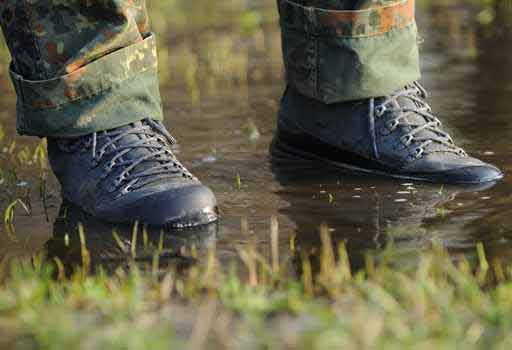
Your feet are also vulnerable to cold temperatures while kayaking in cold weather. Waterproof boots or socks are a great way to protect your feet from the cold and keep them warm and dry. Look for boots or socks that are breathable and insulated to keep your feet warm and comfortable.
Related Gear
The NRS Boundary Shoe with HydroCuff or SealSkinz Waterproof Trekking Socks is a great product that offers excellent protection and comfort.
Fleece or Down Jacket
Wearing a fleece or down jacket while kayaking in cold weather is a great way to stay warm and comfortable. Fleece jackets are lightweight and provide warmth without being bulky, while down jackets are much warmer but often bulkier. Look for jackets that are waterproof and windproof to ensure you stay warm and dry while you paddle.
Related Gear
The North Face Men’s McMurdo Parka III or Patagonia Men’s Tres 3-in-1 Parka are both excellent options for cold weather kayaking.
Winter Hat and Neck Gaiter
A winter hat and neck gaiter are two essential gears for kayaking in cold weather. A winter hat will help keep your head warm, while a neck gaiter will keep your neck protected from the cold. Look for hats and gaiter made of breathable, moisture-wicking fabric for maximum warmth and comfort.
Related Gear
The Smartwool Merino 250 Cuffed Beanie and Neck Gaiter are a great option made of merino wool, which is known for its excellent insulating properties.
Ear Covers and Balaclavas
Ear covers and balaclavas are great for keeping your ears and face warm while kayaking in cold weather. They are designed to protect your ears from the cold wind, while balaclavas provide full coverage and warmth. Look for ear covers and balaclavas made of a breathable, moisture-wicking fabric to ensure maximum warmth and comfort while kayaking.
Related Gear
The BlackStrap The Hood Solid Balaclava and Columbia Bugaboo II Fleece Interchangeable Headwear System are both excellent options for this category.
Comfort-Enhancing Gear
To maximize your comfort while kayaking in cold weather, you’ll need some additional items. Here are some comfort-enhancing gear items to consider:
Insulated Seat Pad or Cushion
The next kayaking gear item to consider is an insulated seat pad or cushion. Sitting in a kayak for extended periods of time can be uncomfortable, and an insulated pillow or cushion can help make it much more enjoyable. That’s why to look for a cushion or pad that is made from waterproof material and offers plenty of cushioning for your bottom. This will help ensure you don’t get sore after long periods of kayaking.
Related Gear
The Skwoosh Classic Kayak Seat Cushion is a comfortable and durable cushion designed specifically for kayaking. It features a lightweight design with a built-in suspension system, making it easy to carry and install. Besides, this cushion is made with Skwoosh’s patented TekPad gel technology, which provides excellent cushioning and insulation against the cold.
Hand Warmers or Heated Grips
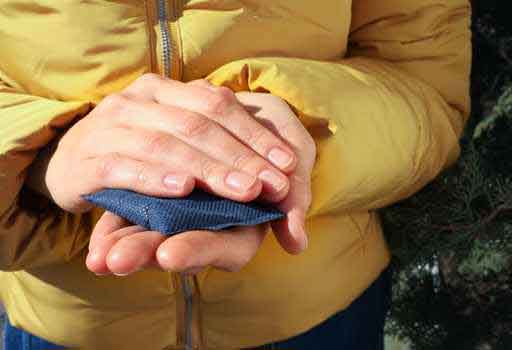
Another great comfort-enhancing kayaking gear item is hand warmers or heated grips. If you’re going to be out on the water for a while, it can be challenging to keep your hands warm. Hand warmers and heated grips are designed to keep your hands warm and comfortable while you paddle. Some even come with adjustable settings so that you can find the right level of warmth for your hands.
Related Gear
The Yakgrips Kayak Paddle Grips are a great way to keep hands warm and comfortable during cold weather kayaking. These grips are made with a soft, non-slip material that provides a comfortable grip, and they are designed to fit over most kayak paddles. They are also easy to install and remove, making them a convenient accessory for any kayaker.
Hot Beverages and Snacks
Finally, remember to bring some hot beverages and snacks to keep you fueled and energized while out on the water. Whether you’re paddling for a few hours or all day, it’s essential to stay hydrated and energized. Bring some hot tea, coffee, or cocoa and some nutritious snacks such as trail mix or granola bars. This will help keep you going and make your kayaking trip even more enjoyable.
Related Gear
The Thermos Stainless King 16-Ounce Travel Tumbler is an excellent way to keep hot beverages, and snacks close at hand during cold weather kayaking. It features vacuum insulation technology that keeps beverages hot for up to 5 hours and cold for up to 9 hours. The tumbler is made with durable stainless steel and has a leak-proof, twist-and-pour stopper, making it easy to use and transport.
Safety and Emergency Gear
Your safety and comfort should always be your number one priority, so you need to make sure you’re prepared with exemplary safety and emergency gear.
Make sure you’re prepared for any potential emergency situation by bringing the following items:
Personal flotation device (PFD)
This is an absolute must-have for cold weather kayaking. A PFD will provide you with extra buoyancy and protection in case of an emergency.
Related Gear
The Stohlquist Fisherman, Personal Flotation Device, is a popular choice among kayakers, especially for those who enjoy fishing. It features a high-back design that provides excellent back support and ensures comfort for extended periods on the water. It also has multiple pockets and attachment points for storing gear and accessories.
Whistle and signaling device
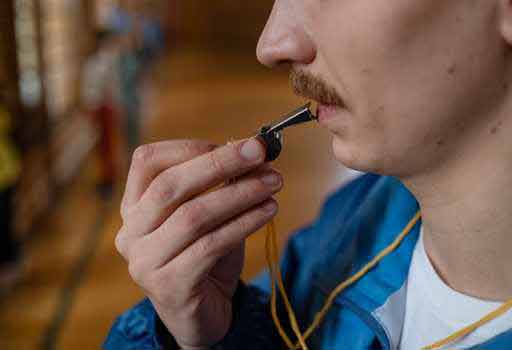
In case of an emergency, you need to be able to signal for help. Bring a whistle and other signaling devices to ensure you’re prepared.
Related Gear
The Fox 40 Sonik Blast CMG Whistle is a must-have signaling device for any kayaker. It produces a loud, clear sound that can be heard over long distances, making it an effective way to signal for help in an emergency situation. It is also designed with a cushioned mouth grip for added comfort.
Cold water immersion gear
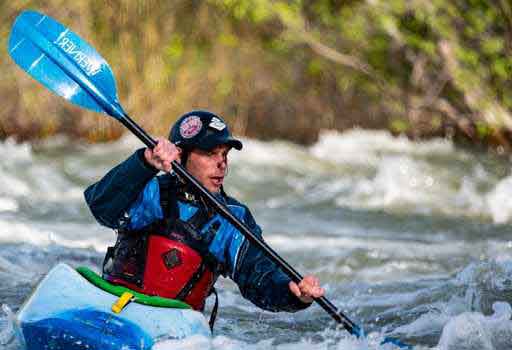
In case of unexpected cold water immersion, you need to be prepared with the appropriate gear. Make sure you bring a wetsuit, drysuit, and other cold-water gear.
Related Gear
The NRS Men’s HydroSkin 0.5 Long-Sleeve Shirt is an excellent piece of cold water immersion gear for kayakers. It is made with a 0.5mm neoprene core that provides excellent insulation against the cold. It is also designed with a comfortable, stretchy fabric that allows for a full range of motion while paddling.
Navigation equipment
A map and compass, as well as a GPS, are essential for cold weather kayaking. Make sure you’re familiar with your route and the navigation equipment you’re bringing.
Related Gear
The Garmin GPSMAP 66th Handheld GPS is a powerful navigation device that is perfect for kayakers. It is built to withstand the elements with a durable, waterproof design. It also features a large, easy-to-read screen and a long battery life, making it an essential tool for navigating on the water. Additionally, it comes preloaded with TopoActive maps, allowing users to find their way through unfamiliar terrain easily.
Know When And Where you shouldn’t go kayaking in the cold
Kayaking in cold weather can be dangerous, and there are certain situations where it is best to avoid going out on the water altogether.
Here are some examples:
High Winds And Waves
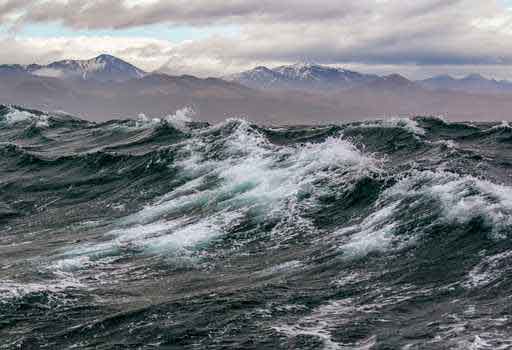
Cold weather kayaking is already challenging enough without adding high winds and waves to the mix. These conditions can make it difficult to control your kayak and increase your risk of capsizing.
Stormy Weather
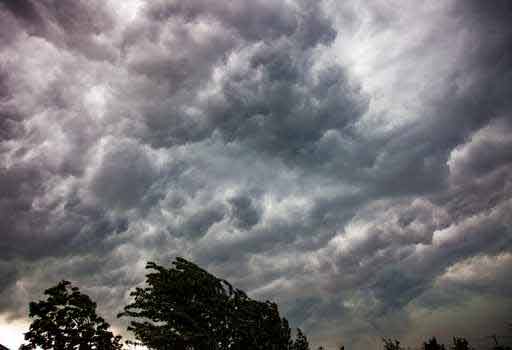
Stormy weather can bring strong winds, heavy rain or snow, and other hazardous conditions. It’s best to stay off the water during these times.
Icy Water
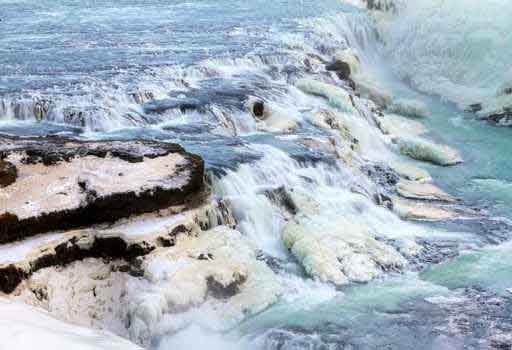
If the water is frozen or has a layer of ice, do not attempt to kayak on it. Kayaking on ice can be incredibly dangerous, and falling through the ice into freezing water can be deadly.
In general, it’s best to avoid kayaking in cold weather if you’re not an experienced kayaker or if you need to be properly equipped with the right gear. Always check the weather forecast and water conditions before heading out, and be prepared to change your plans if conditions are not safe.
Expert Tips for Cold Weather Kayaking
As the popularity of cold weather kayaking continues to grow, it’s essential to take into account the need for safety and comfort precautions. The cold weather kayaking experience can be gratifying, but it also comes with risks that should be taken seriously. To ensure you have the best experience possible, here are some tips for enjoying cold weather kayaking safely and comfortably.
Check the Weather

First and foremost, it’s essential to check the weather before planning your kayaking trip. The weather can change quickly, and it’s important to be prepared for any eventualities. Therefore, pay attention to temperature, wind speed, and other factors that can affect your kayaking experience. Make sure you’ve dressed accordingly and prepared for the conditions you may encounter.
Generally, kayaking in the water below 60°F (15.5°C) can be considered dangerous. Because of the risk of hypothermia, is a condition in which the body’s core temperature drops below normal levels and can lead to loss of consciousness or death if not treated promptly.
Prepare Specific Gear For Cold Weather Kayaking
Before you set out, it’s also important to prepare your gear for cold weather kayaking. Make sure your kayak is in good condition, particularly if you’re paddling in colder temperatures. If you’re using a motorized kayak, make sure the motor is working correctly and that you have the necessary supplies, such as fuel and oil. It’s also a good idea to bring extra layers of clothing in case you get cold.
Stay Hydrated and Nourished

Staying hydrated and nourished is essential for any kayaking, but it’s crucial for cold weather kayaking. Make sure you’re bringing plenty of water, as well as snacks and meals, to keep you energized and alert. This will help you prevent hypothermia and other risks associated with cold weather kayaking.
Dress Appropriately
Another key factor in cold weather kayaking is dressing appropriately. Layering is key, as you’ll want to stay warm while also allowing your body to breathe. Make sure you wear waterproof and windproof clothing, as well as a hat and gloves. It’s also a good idea to bring a change of clothes in case you get wet.
Bring A Buddy
Lastly, it’s always a good idea to bring a buddy when you’re kayaking in the cold. Not only does it enhance safety, but it also makes for a more enjoyable experience overall. You’ll be able to share stories, take turns paddling, and enjoy the winter wilderness together!
The three golden rules of cold weather kayaking
Kayaking in cold weather can be an exhilarating experience, but it also comes with inherent risks. To mitigate these risks, it’s essential to follow the Three Golden Rules of cold weather kayaking.
These rules are;
Know your limits
Kayaking in cold weather can be challenging, and it’s important to know your limits—only attempt to kayak in conditions that are within your skill level or experience. Always check the weather forecast and water conditions before setting out on your trip, and make sure you have the right equipment for your needs.
Dress For Water Temperature
Always dress for the water temperature, not the air temperature. It is crucial because water conducts heat away from the body 25 times faster than air, meaning that even if the air temperature is mild, the water can be dangerously cold.
Double Check Your Gear For Cold Weather Kayaking
Ensure that you have the necessary safety and emergency gear, including a personal flotation device and signaling devices. Finally, paddle with a partner or tell someone your planned route and expected return time. Because in the event of an emergency, you may only have a little time to call for help or stay afloat with the proper gear.
In conclusion, cold weather kayaking can be an exhilarating and rewarding experience, but it can also be dangerous if proper precautions are not taken. Investing in high-quality gear and prioritizing safety should be top of mind for any kayaker planning a cold weather adventure. From personal flotation devices and signaling devices to cold water immersion gear and navigation equipment, there are many essential items that can make the difference between an enjoyable outing and a potentially life-threatening situation. Don’t compromise your safety and comfort.


